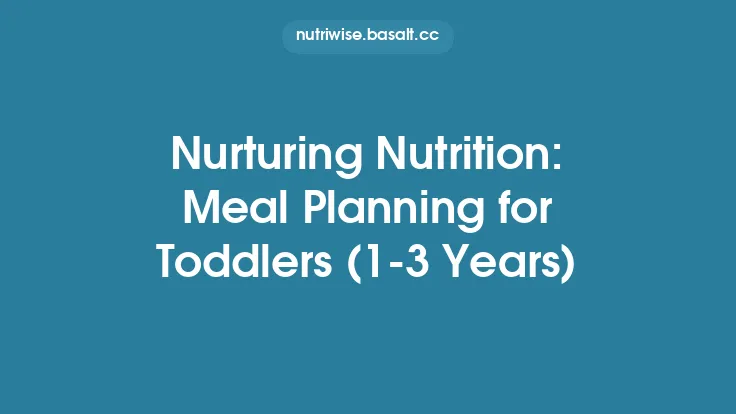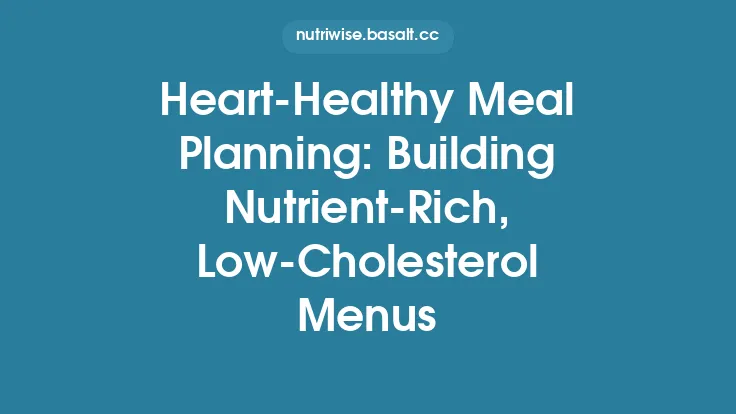Hummus has long been celebrated as a versatile, nutrient‑dense dip that can be whipped up in minutes and paired with a seemingly endless array of accompaniments. Its creamy texture, mild earthy flavor, and plant‑based protein make it an ideal foundation for quick, healthy snacks that fit seamlessly into any meal‑planning strategy. While the classic garlic‑lemon version is a staple in many kitchens, a handful of simple tweaks can transform the base into a series of distinct, snack‑ready spreads—all achievable in five minutes or less with pantry staples and a few fresh add‑ins.
Below, we explore the science behind a perfect hummus base, outline essential tools and ingredients, and then dive into eight vibrant variations that can be assembled in the time it takes to brew a cup of tea. Each variation is paired with suggested serving ideas, nutritional highlights, and storage tips so you can keep your snack station stocked and ready for any craving.
The Foundations: Building a Perfect 5‑Minute Hummus Base
1. Ingredient Chemistry
| Component | Role | Typical Ratio (per cup of chickpeas) |
|---|---|---|
| Cooked or canned chickpeas | Protein, fiber, base texture | 1 cup (≈ 240 g) |
| Tahini (sesame paste) | Emulsifier, healthy fats, depth of flavor | 2 Tbsp (≈ 30 g) |
| Acid (lemon juice or vinegar) | Brightens flavor, stabilizes emulsion | 1 Tbsp (≈ 15 ml) |
| Oil (extra‑virgin olive oil or neutral oil) | Improves mouthfeel, carries fat‑soluble aromatics | 1‑2 Tbsp (≈ 15‑30 ml) |
| Water or aquafaba | Adjusts consistency, adds emulsifying proteins | 2‑4 Tbsp (≈ 30‑60 ml) |
| Seasonings (salt, garlic, cumin) | Flavor foundation | ½‑1 tsp salt, ½ tsp garlic powder or 1 small clove, optional ¼ tsp ground cumin |
The balance of fat (tahini + oil) to aqueous phase (lemon juice + water) is crucial for a smooth, stable emulsion. Too much oil can cause the mixture to separate, while insufficient liquid yields a grainy texture. Adding a splash of aquafaba (the liquid from canned chickpeas) not only thins the dip but also contributes additional proteins that act as natural emulsifiers, enhancing stability.
2. Equipment Essentials
- Food processor or high‑speed blender – A 7‑cup capacity processor handles a full batch without over‑filling.
- Spatula – For scraping down sides to ensure uniform blending.
- Measuring spoons – Precision matters for acid and salt balance.
- Small bowls or ramekins – For serving individual variations.
If you’re truly pressed for time, a sturdy immersion blender can substitute for a food processor; just be sure to use a deep, narrow container to avoid splatter.
3. Speed‑Boosting Tips
- Rinse and drain canned chickpeas quickly under cold water; the residual liquid (aquafaba) can be saved for later use.
- Pre‑measure all ingredients before you start the processor; this eliminates pauses mid‑blend.
- Use room‑temperature ingredients (especially lemon juice) to prevent the mixture from cooling too quickly, which can hinder emulsification.
With the base ready in under two minutes, you have a blank canvas for a spectrum of flavor profiles.
Classic Lemon‑Garlic Hummus (The Baseline)
Even the “plain” version deserves a moment of spotlight because it sets the benchmark for texture and flavor.
Method (2 min):
- Add 1 cup drained chickpeas, 2 Tbsp tahini, 1 Tbsp lemon juice, ½ tsp garlic powder (or one small clove), ½ tsp salt, and 1 Tbsp olive oil to the processor.
- Pulse a few seconds, then stream in 2 Tbsp water while the machine runs until smooth (≈ 30 seconds).
Nutritional Snapshot (per 2‑Tbsp serving):
- Calories: ~70
- Protein: 2 g
- Fiber: 2 g
- Fat: 4 g (mostly unsaturated)
Serving Ideas:
- Spread on whole‑grain pita chips.
- Dollop onto sliced cucumber for a low‑calorie bite.
Now, let’s build on this foundation.
1. Roasted Red Pepper Hummus
Flavor Profile: Sweet, smoky, and slightly tangy.
Add‑Ins (1 min):
- ¼ cup jarred roasted red peppers, drained.
- ¼ tsp smoked paprika (optional).
Technique: Add the peppers to the base and blend until fully incorporated. The natural oils in the peppers enhance creaminess, reducing the need for extra olive oil.
Nutritional Boost: Vitamin C content jumps to ~15 mg per serving, supporting immune health.
Pairings:
- Mini whole‑grain crackers.
- Sliced bell pepper strips for a “double‑pepper” snack.
2. Avocado‑Lime Hummus
Flavor Profile: Rich, buttery, with a citrus zing.
Add‑Ins (1 min):
- ½ ripe avocado, scooped.
- 1 tsp lime juice (in addition to the base lemon).
Technique: Blend avocado with the base; the extra healthy monounsaturated fats create a luxuriously smooth texture, often eliminating the need for additional oil.
Nutritional Highlights:
- Adds ~2 g of heart‑healthy monounsaturated fat per serving.
- Boosts potassium (≈ 150 mg).
Pairings:
- Whole‑grain tortilla chips.
- Sliced radishes for a crunchy contrast.
3. Beet‑Infused Hummus
Flavor Profile: Earthy sweetness with a vibrant magenta hue.
Add‑Ins (1 min):
- ¼ cup cooked, peeled beet, roughly chopped (microwaved beets work in 2 min).
- ¼ tsp ground coriander (optional).
Technique: Process the beet with the base until the color is uniform. The natural sugars in beet balance the savory notes, while the deep color makes the dip visually striking for snack platters.
Nutritional Edge: Provides ~2 g of dietary nitrate per serving, which may support blood flow regulation.
Pairings:
- Sliced apple wedges (sweet‑savory combo).
- Pita triangles toasted lightly.
4. Spicy Sriracha‑Ginger Hummus
Flavor Profile: Bold heat with a hint of aromatic ginger.
Add‑Ins (30 sec):
- 1 tsp Sriracha (adjust to taste).
- ½ tsp freshly grated ginger.
Technique: Blend the hot sauce and ginger into the base; the acidity of the lemon helps temper the heat, creating a balanced kick.
Nutritional Note: Capsaicin from Sriracha may modestly boost metabolism and promote satiety.
Pairings:
- Crunchy snap peas.
- Rice cakes for a low‑calorie vehicle.
5. Sun‑Dried Tomato & Basil Hummus
Flavor Profile: Umami‑rich with herbaceous freshness.
Add‑Ins (1 min):
- ¼ cup sun‑dried tomatoes (oil‑packed, drained).
- ½ tsp dried basil (or a handful fresh basil).
Technique: Blend tomatoes and basil into the base; the oil from the tomatoes contributes additional healthy fats, allowing you to reduce added olive oil.
Nutrient Highlights:
- Lycopene from tomatoes (antioxidant).
- Vitamin K from basil.
Pairings:
- Whole‑grain crostini.
- Sliced zucchini ribbons.
6. Edamame & Wasabi Hummus
Flavor Profile: Creamy, slightly nutty, with a gentle wasabi heat.
Add‑Ins (1 min):
- ½ cup shelled edamame (thawed if frozen).
- ¼ tsp wasabi paste (or powder reconstituted with a few drops water).
Technique: Process edamame with the base; the extra protein from edamame raises the overall protein content to ~4 g per 2‑Tbsp serving.
Nutritional Perk: Complete plant protein profile, plus fiber and iron.
Pairings:
- Nori sheets cut into bite‑size strips.
- Carrot sticks.
7. Greek Yogurt & Dill Hummus
Flavor Profile: Tangy, herbaceous, with a creamy lift.
Add‑Ins (30 sec):
- 2 Tbsp plain Greek yogurt (full‑fat or low‑fat).
- ½ tsp dried dill (or 1 tsp fresh chopped dill).
Technique: Fold yogurt into the already blended base; this adds a probiotic boost and reduces the need for extra oil, keeping the dip lighter.
Nutritional Benefits:
- Adds ~2 g of calcium per serving.
- Increases protein to ~3 g per 2‑Tbsp.
Pairings:
- Whole‑grain pita wedges.
- Cherry tomatoes.
8. Sweet Potato & Curry Hummus
Flavor Profile: Warm, mildly sweet, with aromatic curry notes.
Add‑Ins (1 min):
- ¼ cup cooked sweet potato, mashed (microwave in 2 min).
- ¼ tsp curry powder (adjust to taste).
Technique: Blend sweet potato into the base; the natural starches help thicken the dip, allowing you to use less water.
Nutrient Highlights:
- Beta‑carotene (vitamin A precursor).
- Slightly higher fiber content.
Pairings:
- Baked pita chips.
- Sliced pear for a sweet‑savory contrast.
Storage, Shelf Life, and Food Safety
| Storage Method | Duration | Tips |
|---|---|---|
| Refrigerated (airtight container) | 4‑5 days | Keep a thin layer of olive oil on top to minimize oxidation. |
| Freezer (single‑serve portions) | Up to 3 months | Thaw in the refrigerator overnight; stir well before serving. |
| Room temperature (if served within 2 h) | Up to 2 h | Only applicable for immediate snacking; discard any leftovers. |
Safety Note: Hummus is a low‑acid, high‑protein food, making it susceptible to bacterial growth if left at ambient temperature for too long. Always keep it chilled when not being consumed, and use clean utensils to avoid cross‑contamination.
Customization Framework: How to Invent Your Own 5‑Minute Variation
- Identify a Flavor Anchor – Choose a single ingredient that will dominate the taste (e.g., roasted red pepper, avocado, beet).
- Balance the Five Core Elements –
- Acid (lemon, lime, vinegar) to brighten.
- Fat (tahini, oil, avocado) for mouthfeel.
- Umami (sun‑dried tomatoes, miso, nutritional yeast).
- Heat (chili, wasabi, black pepper).
- Herb/Spice (dill, basil, cumin).
- Adjust Consistency – Add water, aquafaba, or a creamy component (yogurt, avocado) in 1‑Tbsp increments until the desired dip thickness is reached.
- Taste & Refine – A pinch of salt often brings out hidden flavors; finish with a drizzle of oil or a sprinkle of toasted seeds for texture.
By following this modular approach, you can generate endless snack‑ready hummus creations in under five minutes, keeping your snack drawer fresh and exciting.
Quick Snack Assembly Ideas (Under 2 Minutes)
- Hummus‑Topped Rice Cakes – Spread a thin layer, sprinkle with pumpkin seeds, and drizzle with a touch of honey for a sweet‑savory bite.
- Veggie “Spoons” – Use thick cucumber or carrot sticks as edible spoons; fill with hummus and top with a pinch of smoked paprika.
- Mini “Hummus Toasts” – Toast a slice of whole‑grain bread, cut into bite‑size squares, and top with a dollop of hummus and a sliver of roasted red pepper.
- Protein‑Boosted Snack Box – Pair a 2‑Tbsp serving of edamame‑wasabi hummus with a hard‑boiled egg and a handful of cherry tomatoes for a balanced mini‑meal.
These assembly ideas require no cooking, only a quick scoop and a garnish, making them perfect for office drawers, school lunches, or a post‑workout refuel.
The Bigger Picture: Hummus as a Cornerstone of a Balanced Snack Strategy
In the context of meal planning, a well‑crafted hummus variation can serve multiple nutritional goals:
- Satiety: The combination of protein, fiber, and healthy fats slows gastric emptying, helping you stay full between meals.
- Micronutrient Diversity: By rotating flavors (beet for folate, red pepper for vitamin C, sweet potato for beta‑carotene), you naturally broaden your intake of essential vitamins and minerals.
- Portability: Hummus holds up well in a sealed container, making it an ideal on‑the‑go snack that doesn’t require reheating.
When paired with whole‑grain crackers, fresh vegetables, or a modest portion of fruit, hummus becomes a flexible building block that can be tailored to specific dietary needs—whether you’re aiming for higher protein, lower carbs, or extra antioxidants.
Final Thoughts
The beauty of hummus lies in its simplicity: a handful of pantry staples blended into a creamy base that welcomes endless improvisation. By mastering the five‑minute technique and keeping a small repertoire of flavor‑boosting add‑ins on hand, you can turn a single batch of hummus into a week’s worth of vibrant, health‑forward snacks. Whether you crave the smoky depth of roasted red pepper, the buttery richness of avocado, or the daring heat of wasabi, each variation can be assembled in the time it takes to set a timer for a quick microwave‑softened veggie.
Keep your food processor humming, your containers stocked, and let your snack routine evolve—one five‑minute hummus variation at a time.





